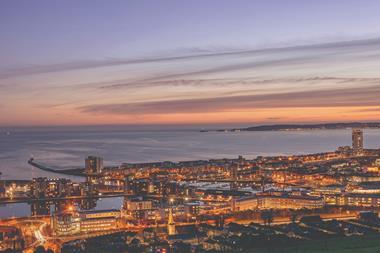As is widely recognised, history repeats itself. Unhelpfully, it does so in a jumbled kaleidoscope of random repetition that makes it hard to apply the lessons learned.

This week, war, Poland and mutual-defence treaties have converged with unwelcome echoes of 1939. NASA has launched a moonshot from Cape Canaveral, re-enacting the 1960s. And Donald Trump is promising to Make America Great Again, again.
In the UK, we are reliving the 1970s, with industrial strife, the prospect of energy blackouts if the weather turns and crushing inflation, with price rises adjudged to have hit 11.1% in October. Alongside that figure, the Office for National Statistics has published a 9.5% increase in house prices over the year to September 2022.
That one sounds encouragingly like business as usual, but is actually a piece of recent history. Sales concluded in September will have been agreed in the spring, typically. So that 9.5% is effectively a fossilised figure, as representative of the market today as the bubbles of ancient air brought to the surface in Antarctic ice samples.
With bubbles of the economic kind, it is a well-worn observation that investors can’t spot one from the inside. The estimated one million investors caught up in the bankruptcy of crypto-currency exchange FTX last Friday can all attest to that, as they witness their collective billions of dollars vanish in a cloud of digital smoke.
This tech-fuelled calamity has been likened to the implosion of the dot-com bubble 22 years ago, which was also built on sentiment rather than concrete assets.
Thankfully, in property, value seldom vanishes completely into thin air. But nonetheless, investors in property must worry whether today’s house prices, up 46% in England over the past dozen years, might represent a bubble ready to burst. Are we set to re-experience the housing crash of the 1980s?
My inbox is full of calming observations from industry experts, many of whom note that demand for housing still outstrips supply, and that fears of spiralling interest rates have eased now that grown-ups are back in Whitehall, suggesting that such factors will continue to prop up prices.
I would like to believe these words of reassurance, but worry that they might represent the views of bubble insiders, unable to perceive an approaching pin.
A more sobering indicator of things to come may be the 9.7% dip in the value of City of London offices owned by Landsec, a drop linked to the risen cost of borrowing. The listed firm’s chief executive Mark Allan cited the wisdom of having sold off £1.8bn in low-yielding assets over the past two years, no doubt wishing that the additional £2bn of assets his firm currently has earmarked for sale could have been disposed of earlier.
Economic bubbles, from the South Sea bubble of 1720 onwards, all have one thing in common – they inflate when too many people believe that returns achieved in the past will continue profitably into the future.
If your plans for the road ahead involve any kind of hope that things will soon return to normal, my advice would be to abandon those plans and think again. The future may well resemble the past, but it won’t oblige by doing so smoothly and predictably. As history reminds us, repeatedly, there is no such thing as normal.





























No comments yet